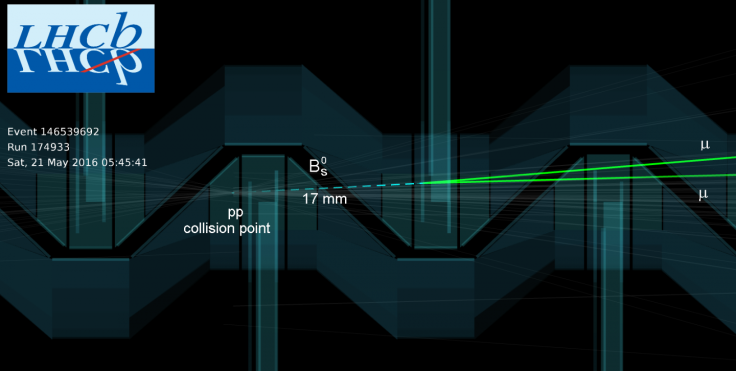CERN’s LHCb Experiment Observes Extremely Rare Particle Decay, Reaffirms Resilience Of Standard Model

The Standard Model of particle physics is the foundation our understanding of the universe rests on. The theoretical framework describes how three of the four known fundamental forces — electromagnetism, weak nuclear force and the strong nuclear force — work.
The problem is, this model is incomplete. It does not explain how gravity works, largely because scientists are yet to discover its force-carrying particle — the hypothetical graviton — and fails to explain the apparent preponderance of dark matter in the universe.
Finding cracks in the Standard Model and heralding an era of “new physics” was one of the key goals outlined by researchers at the European Organization for Nuclear Research (CERN) when they restarted the Large Hadron Collider (LHC) in 2015. Ironically, though, all it seems to have achieved so far is a reaffirmation of how resilient the Standard Model is, and how hard it is to find chinks in its armor.
For instance, on Tuesday, scientists associated with the LHCb collaboration (LHCb is one of the four main detectors located underground in huge caverns on the LHC ring) at CERN revealed they had made the most precise measurement to date of a very rare decay of a particle called Bs0 meson — a heavy particle made of a bottom anti-quark and a strange quark — into a pair of muons. Even though the researchers were looking for signs of physics beyond the Standard Model during the decay, which scientists predict happens only three times out of a billion, they found none.
The first evidence of this decay was discovered in 2012, and the first confirmed observation was made by the CMS (another of LHC's four main detectors) and LHCb collaboration in May 2015.
“The decay of the B meson has been long regarded as a very promising place to look for cracks in the armour of the Standard Model, which, despite being our best available description of the subatomic world, leaves some questions unanswered,” CERN explained in a statement. “The experimental value found by the LHCb collaboration for this probability is in an excellent agreement with the one predicted by the theory, and the result is confirmed to a very high level of reliability, at the level of 7.8 standard deviations: that is, the scientists are extremely sure that it hasn’t occurred just by chance.”
If significant deviations beyond the pale of Standard Model's predictions were detected, it may even have provided the first evidence of “supersymmetry,” which posits the existence of more massive “super partners” for every known particle. But as researchers at CERN put it, the Standard Model is, for now, standing its ground.
“This new finding limits the room for action of other models of physics beyond the Standard Model — all candidate models will have to demonstrate their compatibility with this important result,” CERN said.
© Copyright IBTimes 2025. All rights reserved.






















